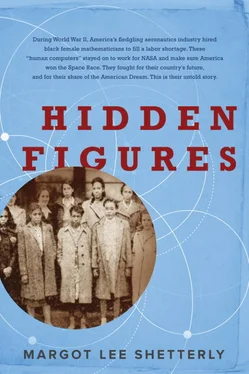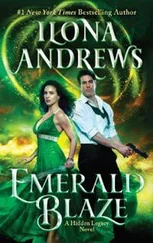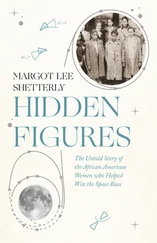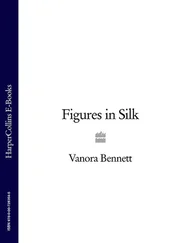Dorothy was born in 1910 in Kansas City, Missouri. Her own mother died when Dorothy was just two years old, and less than a year later, her father, Leonard Johnson, a waiter, remarried. Her stepmother, Susie Peeler Johnson, worked as a charwoman at the grand Union Station train depot to help support the family. She took Dorothy as her own daughter and pushed her to succeed, teaching the precocious girl to read before she entered school, which vaulted her ahead two grades. She also encouraged her daughter’s natural musical talent by enrolling her in piano lessons. When Dorothy was eight, the family relocated to Morgantown, West Virginia, where her father accepted a job working for a successful Negro restaurateur. There she attended the Beechhurst School, a consolidated Negro school located around the corner from West Virginia University, the state’s flagship white college. Seven years later, Dorothy reaped the reward for her hard work in the form of the valedictorian’s spot and a full-tuition scholarship to Wilberforce University, the country’s oldest private Negro college, in Xenia, Ohio. The African Methodist Episcopal Sunday School Convention of West Virginia, which underwrote the scholarship, celebrated fifteen-year-old Dorothy in an eight-page pamphlet that it published and distributed to church members, lauding her intelligence, her work ethic, her naturally kind disposition, and her humility. “This is the dawn of a life, a promise held forth. We who have been fortunate enough to guide that genius and help mold it, even for a little while, will look on with interest during the coming years,” wrote Dewey Fox, the organization’s vice president. Dorothy was the kind of young person who filled the Negro race with hope that its future in America would be more propitious than its past.
At Wilberforce, Dorothy earned “splendid grades” and chose math as her major. When she was an upperclassman, one of Dorothy’s professors at Wilberforce recommended her for graduate study in mathematics at Howard University, in what would be the inaugural class for a master’s degree in the subject. Howard, based in Washington, DC, was the summit of Negro scholarship. Elbert Frank Cox and Dudley Weldon Woodard, the first two Negroes to earn doctorates in mathematics, with degrees from Cornell and the University of Pennsylvania, respectively, ran the department. The white schools’ prejudice was the black schools’ windfall: with almost no possibility of securing a faculty position at a white college, brilliant black scholars like Cox and Woodard and W. E. B. Du Bois, the sociologist and historian who was the first Negro to receive a doctorate from Harvard, taught almost exclusively at Negro schools, bringing students like Dorothy into close contact with some of the finest minds in the world.
Howard University represented a singular opportunity for Dorothy, in line with the AME scholarship committee’s lofty expectations. Possessed of an inner confidence that attributed no shortcoming either to her race or to her gender, Dorothy welcomed the chance to prove herself in a competitive academic arena. But the economic reality that confronted Dorothy when she came out of college made graduate study seem like an irresponsible extravagance. With the onset of the Great Depression, Dorothy’s parents, like a third of all Americans, found steady work hard to come by. An extra income would help keep the household above water and improve the odds that Dorothy’s sister might be able to follow her path to college. Dorothy, though only nineteen years old, felt it was her responsibility to ensure that the family could make its way through the hard times, even though it meant closing the door on her own ambitions, at least for the moment. She opted to earn a degree in education and pursue teaching, the most stable career for a black woman with a college degree.
Through an extensive grapevine, black colleges received calls from schools around the country requesting teachers, then dispatched their alumni to fill open positions in everything from tar paper shacks in the rural cotton belt to Washington, DC’s elite Dunbar High School. New educators hoped to teach in their major subject, of course, but would be expected to assume whatever duties were necessary. After graduation in 1929, Dorothy was sent forth like a secular missionary to join the Negro teaching force.
Her first job, teaching math and English at a Negro school in rural Tamms, Illinois, ended after her first school year. The Depression-fueled collapse in cotton prices hit the area hard, and the school system simply shut its doors, leaving no public education for the rural county’s Negro students. She fared no better in her next posting in coastal North Carolina, where, in the middle of the school year, the school ran out of money and simply stopped paying her. Dorothy supported herself and contributed to the family by working as a waitress at a hotel in Richmond, Virginia, until 1931, when she got word of a job at the school in Farmville.
It was no surprise that the newcomer with the beautiful eyes caught the attention of one of Farmville’s most eligible bachelors. Tall, charismatic, and quick with a smile, Howard Vaughan worked as an itinerant bellman at luxury hotels, going south to Florida in the winter and north to upstate New York and Vermont in the summer. Some years he found work closer to home at the Greenbrier, the luxury resort in White Sulphur Springs, West Virginia, which was a destination for wealthy and fabulous people from around the world.
Though her husband’s work kept him on the road, Dorothy exchanged her traveling shoes for Farmville life and the routines of family, the stability of regular work, and community. Still, coming of age and entering the workforce in the depths of the Depression permanently affected Dorothy’s worldview. She dressed plainly and modestly, spurned every extravagance, and never turned down the chance to put money in the bank. Though she was a member of Farmville’s Beulah AME Church, it was the First Baptist Church that enjoyed her esteemed piano playing come Sunday morning, because they had hired her as their pianist.
As the war intensified, the town post office was awash in civil service job bulletins, competing for the eyes of locals and college students alike. It was on a trip to the post office during the spring of 1943 that Dorothy spied the notice for the laundry job at Camp Pickett. But the word on another bulletin also caught her eye: mathematics. A federal agency in Hampton sought women to fill a number of mathematical jobs having to do with airplanes. The bulletin, the handiwork of Melvin Butler and the NACA personnel department, was most certainly meant for the eyes of the white, well-to-do students at the all-female State Teachers College there in Farmville. The laboratory had sent application forms, civil service examination notices, and booklets describing the NACA’s work to the school’s job placement offices, asking faculty and staff to spread the word about the open positions among potential candidates. “This organization is considering a plan to visit certain women’s colleges in this area and interview senior students majoring in mathematics,” the laboratory wrote. “It is expected that outstanding students will be offered positions in this laboratory.” Interviews that year yielded four new Farmville girls for the laboratory’s computing sections.
Dorothy’s house on South Main sat down the street from the college campus. Every morning as she walked the two blocks to her job at Moton High School, a U-shaped building perched on a triangular block at the south end of town, she saw the State Teachers College coeds with their books, disappearing into classrooms in their leafy sanctuary of a campus. Dorothy walked to school on the other side of the street, toeing the invisible line that separated them.
Читать дальше
Конец ознакомительного отрывка
Купить книгу












